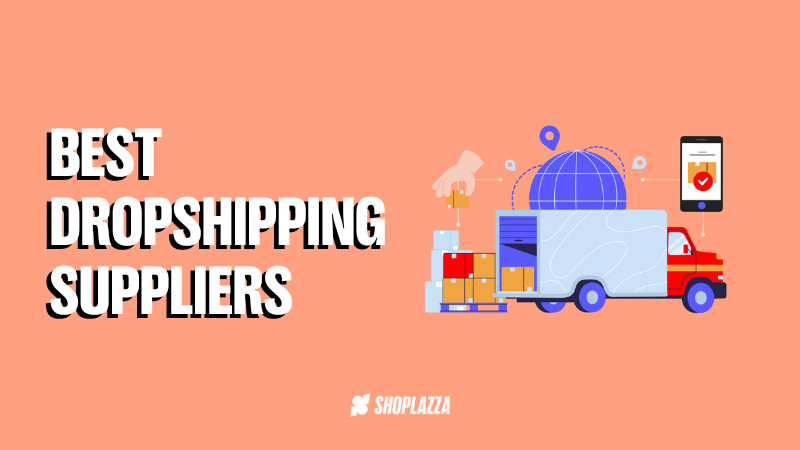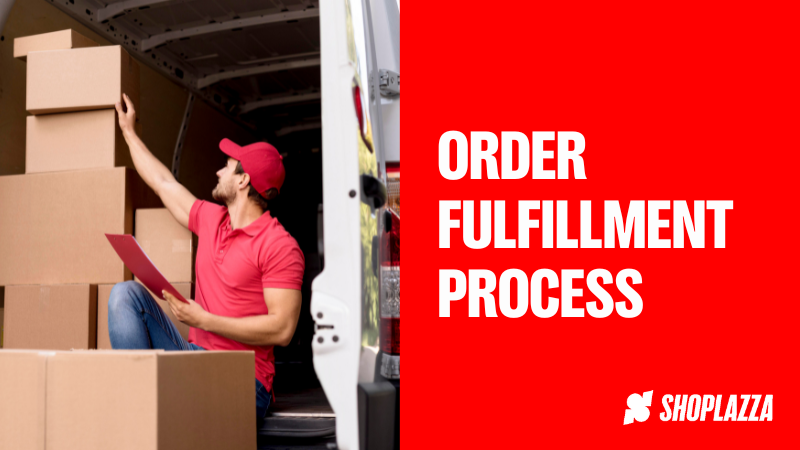
What is dropshipping and how can I leverage it? If this is a question you’ve been asking yourself, then this article will give you the answers you need and some tips on getting started.
This industry is rapidly evolving and dropshipping has emerged as a popular and viable business model for aspiring entrepreneurs who want to start ecommerce businesses.
Whether you're looking to start an online store or exploring alternative business models, you should definitely find out what dropshipping is since it offers an attractive opportunity to enter the market with relatively low upfront costs.
This comprehensive dropshipping guide will walk you through the ins and outs, how it works, the role of dropshipping suppliers, and the step-by-step process to start your own dropshipping business. So if you want to create your own business without thinking a lot about logistics and order fulfillment, you’re at the right place at the right time!
Want to start dropshipping? 🤔
What is dropshipping?
Here are all the basics on dropshipping and how it can help your business, especially if you’re looking to invest your resources in a business model that doesn't need a tremendous upfront investment.
The dropshipping business model is a retail fulfillment method where the seller (the dropshipper) doesn't hold a physical inventory of the products they sell. Instead, when a customer orders, the seller starts the dropshipping process, purchasing the item from a third-party supplier, who then ships the product directly to the customer.
As a result, the seller doesn't have to worry about inventory management, warehousing, or shipping logistics, being only in charge of promoting the product to its target audience.
Dropshipping has gained popularity due to its low barrier to entry and minimal financial risks since you only need to put your website online to start selling without buying directly from suppliers and avoiding inventory costs.
How does dropshipping work?
The dropshipping process can be summarized in simple steps:
- The customer orders on the dropshipper's online store. For example, if your customer is looking to sell merch online, it is when they select a product (like a tote bag) and pay for the order.
- The dropshipper forwards the order and customer details to the selected dropshipping supplier. You can find different suppliers that can help you to sell crafts and electronics or even to start selling jewelry online.
- The dropshipping supplier processes the order, packs the product, and ships it directly to the customer's address.
- The dropshipper pays the wholesale price to the supplier, while the difference between the retail and wholesale prices becomes the dropshipper's profit. Meaning if you sell a product for a hundred dollars and the wholesale price is sixty dollars, you are going to earn forty dollars in one sale.
The dropshipping business model: pros and cons
Now that you know what a dropshipping business is, it’s time to learn what it can do for your business.
The dropshipping model has a lot of advantages that can boost your online business to the next level. That’s why we prepared a list of many benefits of dropshipping and how it can help you achieve your next milestone in your ecommerce store. However, we know that dropshipping isn’t for everyone, so we’re listing the cons so you don’t say we didn't tell you. 😉
Pros of dropshipping
1. Low startup costs
Starting your dropshipping business idea is easy because you don’t need much. Traditional retail models require a significant upfront investment in purchasing inventory, whereas dropshipping eliminates this expense.
This means that all you need is a small investment to set up your online business and for marketing-related costs, leaving the task of managing inventory to your dropshipping supplier.
2. Inventory management
As we mentioned, your dropshipping supplier will be in charge of the entire order fulfillment process, meaning there's no need to manage inventory or worry about an SKU.
The supplier errors, how your dropshipping supplier fulfills all the orders and the entire supply chain are none of your business, meaning that all dropshipping companies have to do is ensure that you’re looking for the right dropshipping supplier to help your business endeavors with their own inventory.
3. Location independence
Dropshipping companies and all e-businesses allow business owners to operate from anywhere with an internet connection, providing flexibility and freedom. So if you’re looking for a simple business model where you can manage your entire company from wherever you are, you should start a dropshipping business.
4. Wide product range
As an ecommerce retailer, having a great product range to offer to your target audience is super important, and with dropshipping, even small businesses have the opportunity to have it.
Since you’re not managing the supply chain directly, collaborating with multiple dropshipping suppliers and entrepreneurs can offer your potential customers a diverse range of products. This makes dropshipping profitable since you can provide everything your customers want, an advantage against other business models.
5. Scalability
Scaling dropshipping businesses is relatively straightforward, as it doesn't involve the complexities of managing physical inventory, giving you a competitive advantage against your competitors. As mentioned earlier, dropshipping stores can sell whatever they want, only needing an ecommerce platform to start an entire dropshipping operation.
Start selling with Shoplazza!
Cons of dropshipping
1. Low profit margin
Since a dropshipping ecommerce store purchase products at wholesale prices and sell them at retail prices, profit margins can be slim, especially if you’re looking for an expensive product. Adding all your marketing expenses will make your profit margin even small, so calculate everything to reach the break-even point.
2. Supplier dependency
This is one of the critical points for dropshippers since the success of your ecommerce store depends directly on the suppliers you choose. Before entering the dropshipping world, remember that you won’t be able (at least in the beginning) to make your own product launch, and if your supplier fails, you fail too.
That complicates your life because dealing with multiple suppliers can lead to varying shipping times and potential delivery issues. If you’re sure you want to start dropshipping, managing all your orders and the relationship with suppliers must be the primary focus of your ecommerce business.
Choosing the best dropshipping suppliers
I know we’ve said this a lot, but it’s because we want your dropshipping ecommerce business to succeed.
Trust us; this information is crucial to the development of your retail store. It may look simple, but you need to find the best dropshipping suppliers that can help you to ship the products, with great fulfillment centers, warehouse space and that are well known for managing the order fulfillment process well.
Because of that, we listed a few things you should pay attention to ensure your dropshipping business and your ideas can succeed in the ecommerce realm.
- Product quality: Ensure that the supplier offers high-quality products to maintain customer satisfaction and reduce the risk of returns.
- Shipping time and costs: Look for suppliers with reasonable shipping fees and fast delivery times to provide a positive customer experience.
- Inventory and stock availability: Partnering with suppliers with sufficient inventory to promptly meet your customers' demands will avoid a lot of headaches. Make sure they can ship products every time someone places an order on your website.
- Reputation and reviews: We don’t have a space for bad reputations here! Research the supplier's reputation, read customer reviews, and seek feedback from other dropshippers before finalizing your choice. Sometimes what we see is untrue, so you must dig deep into it to find reliable information about your suppliers.
In conclusion, what is dropshipping?

Dropshipping is not a magic formula to get rich, meaning you need to keep an eye on your dropshipping operations and even on suppliers' order fulfillment method.
You’re not the only one in the market trying to find your potential customers to turn them into buyers. Other sellers are targeting them with new products and discounts every day.
Since we listed many benefits of dropshipping and the steps to start a dropshipping business, now is the time for you to get rid of shipping costs and dive into the world of market research and customer experience to find products that can make your clients happy during their journey on your online store.
If you think this business model is for you, count on us to help you create your own website and to forget about warehouse space.
So, are you ready to dropship? 😉
FAQ: what is dropshipping?
Did you miss anything? No problem. We prepared a dropshipping FAQ so you can stay ahead of your competitors. Remember, we’re here to help you start dropshipping and reach the status of having a successful business!
1. Is dropshipping legal?
Yes, the law makes dropshipping legal but it requires compliance with relevant rules. Online stores must be registered, obtain a business license, and understand consumer protection regulations.
Engaging in unethical practices, like selling counterfeit products, can lead to legal consequences for your online store. Maintaining ethical business practices is vital for a successful dropshipping venture.
2. How do I find reliable dropshipping suppliers?
Find reliable dropshipping suppliers through online directories like Oberlo, SaleHoo, and Dropwinning, or contact manufacturers directly. Attend trade shows to meet potential suppliers. Research their reputation, product quality, shipping times, and customer service before deciding.
3. What are the potential risks of dropshipping?
Potential risks of the dropshipping process include low-profit margins, supplier dependency, shipping complexities, managing customer expectations, and product quality issues.
Competition in the market can be fierce, so find suppliers that can assure a product's delivery when a customer orders.
4. Can I run a dropshipping business with my own online store?
Yes, everybody can join the dropshipping model. All you need to do is to create your own dropshipping store using platforms like Shoplazza. Customizing your site allows greater control over branding and marketing efforts, and you can leave the rest to your suppliers and their fulfillment centers.
5. How can I increase the success of my dropshipping business?
Focus on niche selection, product quality, excellent customer service, and effective marketing strategies. Emphasize building a trustworthy brand and engaging with your audience.





